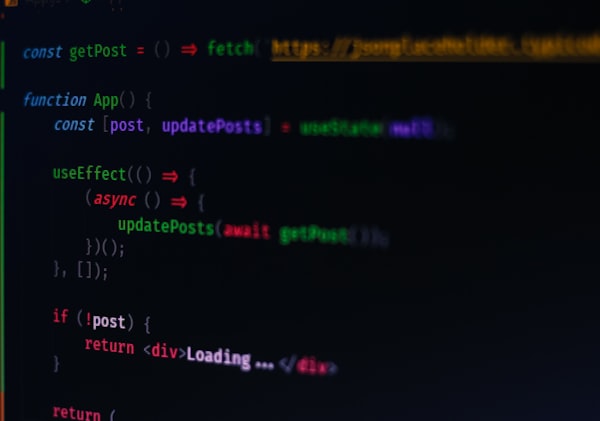1. The Importance of Unit Testing in JavaScript Applications
Oh, the glamorous life of a JavaScript application developer! Weaving magic with your hands, leaving trails of code, creating virtual masterpieces that dance and twirl at your command. The excitement! The thrill! And then, a bug enters the scene, pulling a curtain on your dream performance. It's like biting into an apple only to find a worm. Yikes!
Enter the humble unit test - the unsung hero, the Batman to your Gotham. While we might get carried away by the excitement of development, the truth remains that software, much like a mischievous toddler, is prone to tumble and fall. This is where unit testing steps in, making sure your software is balanced and ready for the challenges that come its way.
Unit testing is the fine art of checking each unit (a tiny piece) of your application for errors. It's like playing a game of "Where's Waldo?" but with bugs. It's meticulous, it's detail-oriented, and it can turn your project from a sloppy mess into a smooth-running machine.
Why is it important? Imagine you're building a tower of Lego blocks. You add a new shiny red block to your structure and... BOOM! The whole tower crumbles. How do you find out which block was the culprit? Now replace "Lego blocks" with "lines of code", and you'll get the idea.
Unit testing in JavaScript is especially crucial because JavaScript, my dear friends, is a bit of a wild child. It's dynamic, it's versatile, it's everywhere! You've got Node.js on the server-side, React.js in the UI, and even IoT devices using JavaScript. Such omnipresence calls for a vigilant eye and regular checks. With good unit tests, you ensure the stability and reliability of your applications, saving yourself the awkward blushes of bugs discovered by your users.
So, while we may not have a red carpet rolled out for unit testing, it definitely deserves a standing ovation. After all, it's the Batman of our coding universe, silently watching over our codescape, tirelessly guarding us from nasty bugs, and ensuring our software runs as smoothly as a cheetah on a hoverboard. Let's dive deeper into this topic and unveil the secrets of this silent guardian, the JavaScript unit testing!
2. Understanding Unit Testing: Definitions and Key Concepts
Ladies and gentlemen, let's dive headfirst into the wonderful whirlpool of unit testing! Buckle up, for we're about to unlock the mysteries of this shadowy character in the JavaScript drama.
What, pray tell, is a 'unit'? Well, in the digital realm, a unit is the smallest testable part of an application. It's like a single brick in the sprawling castle of your software. It could be a function, a procedure, an individual method. If it were a book, it would be a paragraph; if it were a cake, it would be a slice. You get the idea.
Now, the 'testing' part is all about throwing a series of challenges at this small piece of code and checking if it emerges victorious. Picture it as a gladiatorial battle in the arena of quality assurance, where our brave little unit faces scenarios designed to check if it behaves as expected. Does the function return a correct value? Does the procedure execute in the proper order? Will our unit stand strong against the onslaught of various inputs and conditions?
Unit tests are mostly written and maintained by developers themselves (yes, you!). They help you ensure that your code behaves just as you'd expect, and they act as an early warning system against potential bugs, much like the lookout on a pirate ship, ready to yell, "Bug ahoy!" They give you the confidence to charge forward with new features without accidentally breaking something in the process.
An important concept here is 'isolation.' Each unit test should be an island unto itself, with no dependency on any other test. This helps ensure that any test failure points precisely to the problem in the code, rather than getting tangled in a web of interdependencies. If unit tests were bowling pins, each one would stand alone, rather than leaning on its neighbors for support.
Also, unit tests need to be quick. Like Road Runner zipping past Wile E. Coyote quick. This allows developers to run them frequently without being slowed down, ensuring that everything is in tip-top shape as they progress through the development process.
Phew! That's quite a bit to digest. Just remember, unit testing is your silent sidekick, your steadfast shield-bearer against the chaotic mess of bugs. With it by your side, you can confidently navigate the tumultuous seas of JavaScript development. Now, let's set sail towards the various unit testing frameworks awaiting our exploration. Anchors away!
3. Choosing the Right JavaScript Unit Testing Framework: An Overview
Ahoy, dear navigators of the JavaScript Sea! We're about to embark on an epic journey across the vast ocean of JavaScript Unit Testing frameworks. These magical tools are like your trusty compass, guiding you towards bug-free shores and helping you navigate the unpredictable waters of software development.
First on the dock, we meet Jest, the big kahuna of JavaScript testing frameworks. Jest, created by the geniuses at Facebook, is like that kid in school who was good at everything - it's fast, it's powerful, and it's also a bit of a show-off. One of its most dazzling tricks is snapshot testing, a feature that allows you to freeze the state of your UI in carbonite (we see you, Han Solo!) and compare it to future states.
Just around the corner, we find Mocha, a highly flexible lady of the sea, known for her freedom and independence. Mocha doesn't tie you to any specific style of testing, assertion library, or spy framework. She allows you to pair up with her friends like Chai (for assertions) and Sinon.js (for spies and stubs), giving you the liberty to tailor your testing environment as per your needs.
Next up, there's Jasmine, a zero-dependency marvel that comes with everything you need out of the box. It's like that handy Swiss Army Knife you bring to your camping trips. Jasmine doesn't require DOM, making her a go-to choice for projects that involve Node.js, Python, Ruby, or even PHP.
Last, but by no means least, we have Ava. Ava is the sprinter of the JavaScript testing world - lean, mean, and quick on her feet. She runs tests concurrently, meaning she can handle multiple tasks at once without breaking a sweat. If your project requires a lot of IO or heavy computation, Ava could be your perfect partner in crime.
Choosing the right framework for your project is much like choosing the perfect ship for your voyage. You need to consider your destination (the project requirements), the cargo you're carrying (the size and complexity of the project), and the crew you've got (the skills and preferences of your team).
Remember, there's no one-size-fits-all answer. Just like every pirate has their preferred ship, every developer has their preferred testing framework. So, weigh your options, plot your course, and set sail towards bug-free horizons! Now, let's cast our spyglass towards Jest, the jester king of JavaScript testing frameworks. Full steam ahead!
4. Diving Deeper into Jest: The Leading JavaScript Testing Framework
Ah, Jest! The very name brings a smile to the faces of JavaScript developers. Jest, the jesting jester of JavaScript testing, is a powerhouse tool, beloved and respected throughout the Seven Seas of Code. Fasten your diving gear, dear reader, as we plunge into the depths of this incredible framework.
Jest is like that all-in-one gadget you've always wanted - it provides a complete and ready-to-use testing solution out of the box. The batteries are included, so to speak. You've got your assertion library, your mocking support, and even a magical tool for creating code coverage reports. It's like a Swiss Army knife, a multitool, and a wizard's staff, all rolled into one.
One of the things that make Jest really stand out from the crowd is its delightful 'Snapshot Testing' feature. Picture a crime scene investigator taking a snapshot of a crime scene. Now, replace 'crime scene' with 'UI', and 'investigator' with 'developer'. That's snapshot testing for you. It's an excellent way of making sure your user interface isn't pulling any unexpected pranks on you.
Jest also comes with a fantastic feature called 'Watch Mode'. No, it doesn't tell you the time, but it does something even cooler. It automatically reruns your tests whenever it detects changes in your code. It's like having a loyal guard dog that's always on the lookout for any mischief in your code.
But wait, there's more! Jest also supports asynchronous testing. So, if your code likes to take its own sweet time (we're looking at you, APIs and databases), Jest has got you covered.
One of Jest's secret weapons is its Mocking feature. Think of it as your personal team of stunt doubles, stepping in and mimicking the behavior of other code bits, so you can test your units in isolation.
Whew! That's quite a treasure chest of features, isn't it? But the best part is, Jest is incredibly easy to set up. It's like that Lego set you managed to assemble without swearing or throwing pieces across the room. With a well-written guide and a highly supportive community, you'll feel at home with Jest in no time.
Now that we've taken a deep dive into Jest, let's come up for air and take a closer look at Mocha and Chai, the charming chums of JavaScript testing. To the surface, mateys!
5. A Closer Look at Mocha and Chai: Alternative Tools for JavaScript Testing
Welcome back to the surface, dear coding adventurers! It's time to take a leisurely stroll through the enchanting land of Mocha and Chai. If Jest is the Swiss Army knife of JavaScript testing, then Mocha and Chai are the dynamic duo, the Batman and Robin, the Bert and Ernie of the JavaScript world. So, grab a cup of, well, mocha, and let's embark on this journey together.
Mocha is the flexible framework that won't box you in. If Jest is the all-inclusive resort, Mocha is the off-the-beaten-path backpacking trip. With Mocha, you've got the freedom to choose your assertion library, your mocking library, and even your favorite flavor of latte. It's like a build-your-own adventure story, but with fewer dragons and more lines of code.
This freedom-loving framework allows you to define custom reporter functions, meaning you can decide how your test results are reported. It's like being your own news broadcaster, but instead of reporting on local events, you're breaking the latest news on your code's performance.
One of Mocha's standout features is its intuitive use of 'describe' and 'it' blocks for organizing tests, making your code as easy to read as a bedtime story. It's like the Shakespeare of the coding world, bringing drama and clarity to your testing scripts.
But Mocha doesn't work alone. It pairs up beautifully with its loyal companion, Chai, a delightful assertion library. If Mocha sets the stage, Chai is the performer, giving voice to your testing needs with its eloquent assertions. Chai supports both BDD (Behavior Driven Development) and TDD (Test Driven Development), offering a variety of styles to express your testing tales.
Together, Mocha and Chai offer a highly configurable and adaptable testing environment. They might require a bit more setup compared to Jest, but they reward you with flexibility and choice. It's like choosing to cook a gourmet meal at home instead of ordering takeout. It takes a bit more effort, but oh, the satisfaction!
Now that we've had our fill of Mocha and Chai, let's move on to our next destination. Next stop: Effective Techniques for Writing Unit Tests in JavaScript! Let's keep this adventure rolling, my fellow explorers!
6. Effective Techniques for Writing Unit Tests in JavaScript
Brace yourself, code warriors, for we're about to delve into the sacred dojo of unit testing techniques. Here, we will master the art of crafting robust, efficient, and resilient unit tests for our JavaScript applications. Get ready to snatch the pebbles from the master's hand!
Our first technique is an ancient wisdom known as "Arrange-Act-Assert," or the AAA pattern. It's like the three-act structure of a gripping play. 'Arrange' is where you set the stage, prepare the inputs, and bring in the props. 'Act' is the heart of the drama where your function or method takes center stage. 'Assert' is the grand finale where you check if everything went according to script. This method ensures your tests are as neat and organized as a Zen garden.
Next, we have the 'One Assertion Per Test' rule, the monastic practice of simplicity. Each test should check just one thing and one thing alone. It's like going on a minimalist diet - fewer things to worry about and a simpler, clearer test in the end.
Third on our list is 'Test Behavior, Not Implementation'. This technique advises you to focus on the 'what' rather than the 'how'. Test whether your function delivers the expected output, not how it achieves it. It's like judging a magic trick. You're more concerned about the rabbit appearing in the hat than the method of the magician.
A crucial technique is 'Mocking and Stubbing'. These are your stunt doubles and understudies, stepping in for external dependencies and complex code during your tests. They ensure that your unit tests stay as isolated and independent as a monk in meditation.
Lastly, remember to 'Write Tests for Both the Happy Path and the Unhappy Path'. Life isn't all sunshine and rainbows, and neither is code. So, write tests for the ideal scenarios (the happy path), but also for the potential pitfalls and errors (the unhappy path). It's like practicing both your victory speech and your concession speech, just to be prepared.
Writing effective unit tests is a vital skill for any JavaScript samurai. It demands patience, precision, and a healthy dose of cleverness. But once you master these techniques, you'll be slicing through bugs and errors like a ninja in the night.
Having absorbed these profound lessons, let's journey onward to the temple of best practices for maintaining and updating unit tests in JavaScript.
7. Best Practices for Maintaining and Updating Unit Tests in JavaScript
Welcome, my code-ninja comrades, to the dojo of diligence! We've conquered the art of writing unit tests, and now it's time to learn how to keep them polished, sharp, and ready for action. Much like maintaining a finely tuned samurai sword, maintaining your unit tests requires care, discipline, and the occasional oiling.
First off, let's talk about consistency. Just like the rhythmic flow of a tai chi routine, your tests should follow a consistent pattern and structure. Consistency makes your tests easier to read, update, and understand. It's the backbone of a well-maintained test suite, helping you and your team to move in unison like a well-choreographed kata.
Next up is the art of documentation. A well-documented test is like a map in a treasure hunt, guiding you through the intricacies of the code. Describe what each test does, the rationale behind it, and its expected outcome. Good documentation is like leaving a trail of breadcrumbs for future you, or another developer, to follow.
A key practice is to keep your tests DRY - Don't Repeat Yourself. If you see similar test setups, consider using beforeEach hooks or shared functions. Like a monk repeating his mantras, repetition in your tests can lead to mindless mistakes.
Now, let's discuss automation. The power of automation in maintaining and updating unit tests cannot be overstressed. Automated testing saves time, reduces errors, and gives you more time for meditation... or, you know, more coding. Make it a practice to run your tests every time code is pushed to the repository, creating a safety net that catches bugs before they can do a ninja vanish.
Lastly, and perhaps most importantly, make testing a part of your development culture. Write tests as you write code, not as an afterthought. Remember, a good test is like a faithful shadow, always accompanying its code.
Now that we've learned these valuable maintenance mantras, let's march forward to our final topic: common challenges and how to overcome them in unit testing JavaScript applications. With the zen of maintenance practices in our hearts, we're ready to face any hurdle! Forward march, fellow code warriors!
8. Overcoming Common Challenges in JavaScript Unit Testing
Ah, challenges! The dragon at the gate, the tricky trap in the dungeon, the unexpected plot twist in the epic saga of JavaScript Unit Testing. Fear not, dear adventurers, for every dragon can be slain, every trap disarmed, and every plot twist untwisted. Let's decode the mysteries of these common challenges together.
First up is the conundrum of Asynchronous Code. JavaScript, being the fun-loving, free-spirited language that it is, loves to multitask. This can lead to tricky situations when testing asynchronous functions. But worry not! Our loyal companions, Mocha, Jest, and friends, have excellent support for asynchronous testing. It's like having a magic amulet that controls time!
Next on the list is the tricky task of Testing User Interaction. Like trying to catch a ghost, it can be tricky to test events like clicks, mouse movements, or keyboard inputs. However, with the help of tools like Jest's Mock functions or libraries like Enzyme, we can mimic these elusive events and test them effectively. It's like a charm spell for summoning ghosts to our aid!
Testing components that rely on External Dependencies can be like walking a tightrope. You never know when a dependency might decide to change its behavior and pull the rug from under your feet. Here's where the magic of Mocking and Stubbing comes into play. With these techniques, you can create controlled environments for your tests, making them robust and reliable.
Lastly, we have the challenge of Maintaining and Updating Test Suites. This is less of a dragon and more of a sloth, slow but persistent. The keys to overcoming this challenge are discipline and good practices. Automate your tests, keep them DRY, consistent, and well-documented, and they'll age like fine wine.
Remember, challenges are not roadblocks, but stepping stones towards better code and a better you. With these tricks up your sleeve, you'll be ready to face any challenge that comes your way.
And with that, we've reached the end of our epic journey through the world of JavaScript Unit Testing. Fear not, for the end of one adventure is but the beginning of another. Keep exploring, keep coding, and keep jesting! Until our next adventure, fare thee well!
9. Case Studies: Success Stories of Unit Testing in JavaScript
Behold, code champions, the hall of fame! This is where we celebrate the triumphs and victories in the realm of JavaScript Unit Testing. We shall hear the ballads of brave developers and teams who harnessed the power of unit testing to conquer bugs, vanquish errors, and build robust, reliable applications. Bring out the popcorn, and let's dive into these epic tales!
Our first tale hails from the renowned realms of Facebook. Yes, the social media giant that connects millions of users around the globe. When Facebook decided to launch Jest, their very own JavaScript testing tool, it marked a turning point in their battle against bugs. The introduction of Jest helped the developers at Facebook to increase their test coverage significantly, catching bugs before they could wreak havoc, like knights catching dragons before they could torch the kingdom.
Next, we have the saga of Airbnb, the popular home-sharing platform. Faced with a monstrous codebase and a plethora of user scenarios, they turned to Enzyme, a JavaScript testing utility developed by their very own engineers. The combination of Enzyme and Mocha allowed Airbnb to test their complex user interface components effectively, ensuring that users around the world have a seamless booking experience, like wizards ensuring a smooth magic carpet ride.
Last but not least, we have the tale of Netflix, the global streaming service. When Netflix decided to migrate their front-end JavaScript to Node.js, they needed a reliable testing solution. Enter Jest, with its delightful features like Snapshot Testing and Parallelized Test Execution. Jest allowed Netflix to test their code swiftly and efficiently, ensuring that binge-watchers around the world never have to face an unexpected bug in the middle of their favorite show.
These are but a few tales among many, champions of code. They stand as testament to the power and potential of JavaScript Unit Testing. As we learn from these victories, let's carry their lessons forward into our own coding adventures. As they say in the ancient scrolls, the test of the code is the joy of the coder. May your tests always pass, and your code be bug-free!
10. Future Trends in JavaScript Unit Testing: What to Expect
Ah, the future! A land of mystery, promise, and probably a few more JavaScript frameworks. But worry not, fellow code-trekkers, for we have a magic crystal ball (also known as educated predictions) to give us a glimpse of what the future might hold for JavaScript Unit Testing. So, fasten your seatbelts, and let's take a ride on our time-traveling DeLorean!
First stop, the realm of AI-powered testing. Artificial Intelligence, with its ability to learn patterns and automate tasks, is already making waves in various fields. It's not too far-fetched to imagine a day when we have AI-powered testing tools that can generate and update test cases automatically, spot patterns in errors, and even fix bugs on their own. It's like having a robot butler to do your chores, but in this case, the chores are unit tests!
Next, we foresee the rise of real-time testing tools. With the rise of CI/CD practices, the need for tools that can run tests in real time, as and when code is written or committed, is becoming more crucial. Imagine a world where every line of code you write is instantly tested and validated. It's like having a spell-check that not only catches your typos but also verifies the grammar, context, and literary style!
We also predict a growing emphasis on Visual Testing. As web interfaces become more complex and interactive, testing these UIs for consistency and errors across different screen sizes and devices will gain importance. Expect more tools and frameworks that can help capture and compare UI screenshots, track visual changes, and alert you if something's amiss. It's like having a personal art critic for your web app designs!
Finally, we foresee a more significant shift towards Behavior-Driven Development (BDD). As teams become more agile and collaborative, expressing tests in a way that everyone (developers, testers, product owners) can understand will become more valuable. We might see more testing tools adopting a BDD style syntax and approach.
So there you have it, brave code-adventurers. The future of JavaScript Unit Testing looks exciting, innovative, and full of potential. As we venture forward, let's remember the lessons of the past, the tools of the present, and the promises of the future. May your tests always pass, your code stay bug-free, and your spirits remain high. Onwards to the future, JavaScript explorers!








